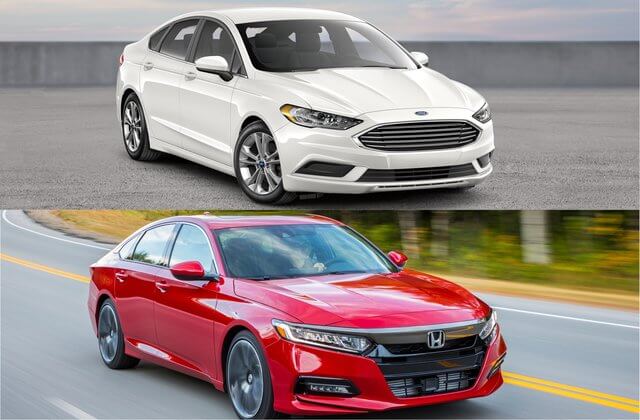Content Attributes
Ford and Honda are some of the biggest names in the automotive industry, pushing each other’s limits to get a bigger share of the North American pie. But which brand currently has the upper hand?
This article will look at both automakers’ track records and overall maintenance costs to determine which produces the most reliable vehicles. Moreover, we’ll also look at how a good Honda or Ford factory service manual can help you take care of your ride and cut down on repair bills in the process.
So without further ado, let’s dive in.
Which Brand is More Reliable — Ford or Honda?
Let’s be frank here, this battle is not as close as one could expect. Indeed, Honda vehicles frequently surpass even the 100,000-mile mark without any significant problem and are also usually lighter on the pocket when it comes to maintenance expenses. Meanwhile, its American counterpart frequently ranks at the bottom of reliability rating surveys. For instance, RepairPal only gave Ford a 3.5/5 reliability rating, whereas Honda gets a slightly more satisfactory 4.0/5.

Now, reliability and annual maintenance costs are directly related. Unsurprisingly, a more reliable vehicle will need less frequent repairs, ultimately reducing the overall cost. As a result, Honda is one of the cheapest brands to maintain in the automotive industry with an average annual repair cost of $428.
Meanwhile, the Blue Oval incurs yearly maintenance expenses of $775, which is quite a lot for a non-luxury automaker. Still, Ford has quite a few larger and more expensive vehicles in its range, including the F-150 and Expedition, while Honda mostly sells economy cars and city-oriented SUVs and trucks.
Regardless, Honda easily wins the reliability bout here.
Maintenance Costs Compared
To have a better idea of how maintenance expenses vary across the two brands, let’s compare some of the most popular models from both automakers.
First up, we’ll look at the heavyweights — the 2012 3.5-liter Ford F-150 and Honda Ridgeline pickups. A brand new brake caliper for the F-150 will cost you between $61 and $114, while the same for the Ridgeline starts at $68.
Furthermore, a drive belt replacement will cost you $113 ($18 parts; $95 labor) for the F-150 and $144 ($50 parts; $95 labor) for the Ridgeline. And if your truck’s alternator ever needs to be replaced, a new one for the F-150 starts at $166 and $155 for the Ridgeline.
Coming to compact SUVs, the Ford Escape and Honda CR-V are dominant forces in the North American market. A brand-new driveshaft for the CR-V starts at $675 and $611 for the Escape, while a fuel pump replacement will set you back $258 ($139 parts; $119 labor) on the Escape and $246 ($117 parts; $128 labor) for the CR-V.
Looking at the prices closely, you can see a definite pattern where labor expenses account for almost 50%-70% of the total bills. Most repair shops or dealerships across the US and Canada charge around $100 for an hour in labor expenses, so the longer a particular replacement takes, the higher the labor charge.
However, you can easily avoid paying for labor if you perform your own repairs and follow the manufacturer’s recommended replacement procedures you’ll find in a Honda or Ford auto repair manual. Unfortunately, these manuals are not provided at the time of purchase like owner’s manuals are and you’ll need to turn towards a supplier like eManualOnline to get your hands on one. But trust me, these things pay for themselves after the first time you skip the repair shop for an oil change.
Cheapest Honda and Ford Vehicles to Maintain
Honda is one of the carmakers with the lowest repair frequency and it plays a significant role in keeping annual maintenance costs down. And even though the brand’s parts tend to be more expensive in general, they also tend to last longer than Ford’s.
Interestingly, while the Civic is currently one of the cheapest models to maintain, with only a yearly average of $368, Honda’s actual cheapest model to maintain is the HR-V, requiring only $300 annually. However, even the CR-V is pretty light on the pocket, with an annual maintenance cost of $430.
On the other hand, Ford’s cheapest alternatives would be the Fiesta and Focus, with a yearly maintenance cost of $552 and $569, respectively, and of course, repair expenses increase as you move to larger vehicles. The Ford Escape and Edge come with a yearly average of well over $600, and the Expedition requires nothing less than $861 a year — that’s more than double what the Civic would cost you.
In the end, Ford’s yearly maintenance expenses are so high that even its entry-level hatchbacks match Honda’s midsized Honda SUV. Hence, we can easily conclude that the Japanese giant makes vehicles that are significantly more reliable, and ultimately, much cheaper to operate.
Last Words
So clearly, Honda requires less maintenance between the two. Japanese brands are known for their reliability, which even American giants like Ford and GMC find hard to master.
But even then, if you are an enthusiast like me, you’ll be ready to sacrifice a bit of reliability in exchange for a little more thrill. Honda sure has its fair share of decent sports cars, but I’m a Mustang V8 guy myself.
And of course, learning how to fix your own car and cut on labor costs using an official Ford repair manual is an easy way to make up for the higher maintenance cost. After all, if 50% of your Ford Expedition’s annual maintenance expenses are made of labor charges, fixing your truck on your own also means that it will now cost about the same as a CR-V — and well, I have nothing against the CR-V, but let’s just say it’s a bit lacking compared to the Expedition
Still, if you’re not so much into tools and greasy hands, a Honda will definitely be easier on your budget in the long term.